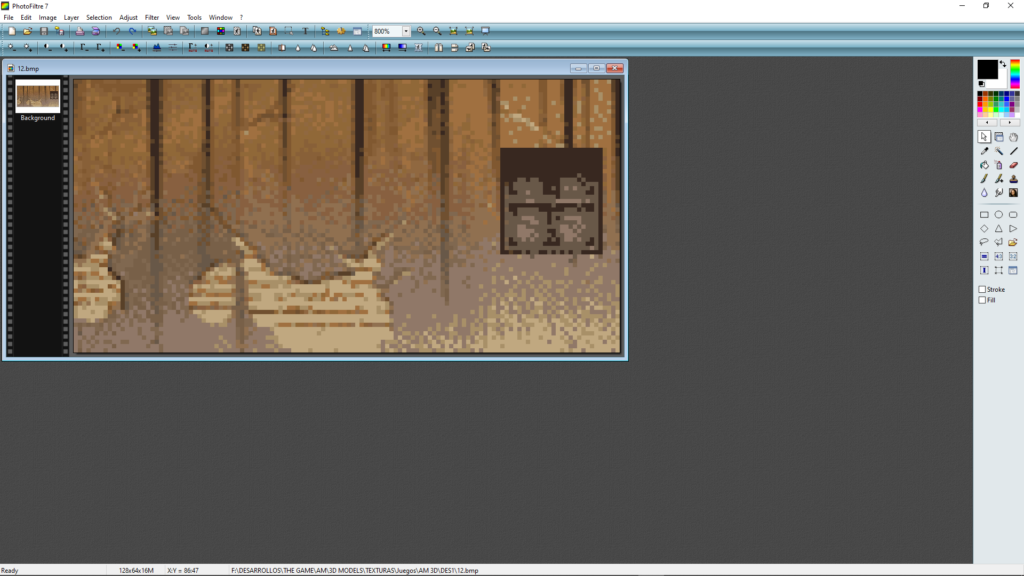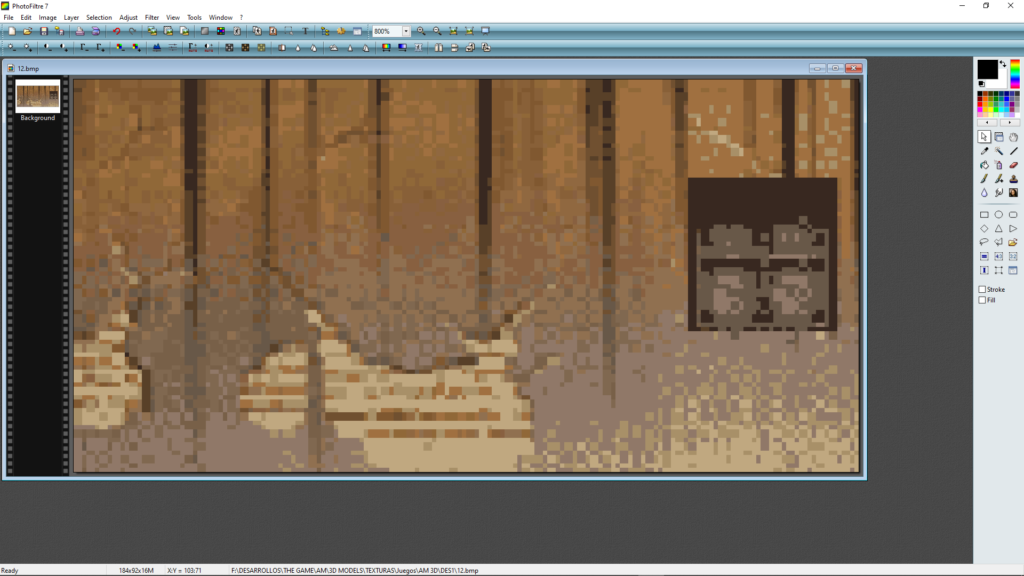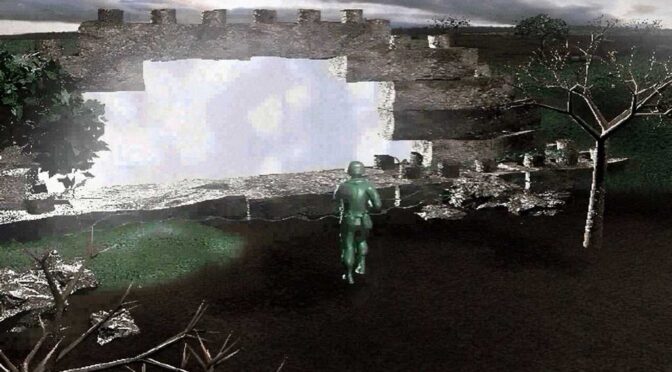Major Mylar’s initials are MM (he uses them on his badge). Major Malfunction’s initials are also MM. Major Gooding was Lord Malice, so in “Major Malice” we can also find MM. Which member of the 3DO team that designed some of the games has those initials: Michael Mendheim.
But before you think anything of it, this is just a joke, we’re not theorizing anything 👀. But here’s what it’s all about… and this is the fun part.
When the Fans Write the Story
Across pop culture history, fan enthusiasm has often rewritten the destinies of fictional characters—turning minor roles into legends, saving doomed figures from oblivion, and reshaping entire franchises.
Theories in fandoms are exciting for a number of reasons:
- Creativity: They allow fans to use their imagination to fill in gaps in the official story, creating new narratives and possibilities.
- Connection: They foster a sense of community, as fans discuss and debate their theories, sharing their enthusiasm and passion.
- Deepening: They help fans explore the story’s universe further, uncovering details and connections that may not be apparent at first glance.
- Interactivity: They make the fan experience more interactive, as fans don’t just consume content, but actively contribute to it.
By the way, it has been proven that some theories in other fandoms were so plausible and amazing to the creatives behind that fandom’s franchise, that they ended up making these fans’ “dreams” come true.
How passionate audiences became co-authors of the narrative
Here are some instances where fan theories or requests influenced the creators to make changes or additions to the story:
- Peter Parker in “Iron Man 2”: This theory suggested that a young boy wearing an Iron Man mask at the Stark Expo, who is saved by Iron Man, was actually Peter Parker. Tom Holland, who plays Spider-Man, confirmed this theory in an interview, stating that the boy was indeed Peter Parker.
- Rex in “Return of the Jedi”: Fans speculated that the bearded Rebel trooper seen on Endor in “Return of the Jedi” was actually Captain Rex from “Star Wars: The Clone Wars” and “Star Wars Rebels.” This theory gained traction when “Star Wars Rebels” confirmed that Rex fought in the Battle of Endor. However, the character in “Return of the Jedi” was originally named Nik Sant, and while the theory is popular, it remained a bit complicated for some time, because was not officially confirmed by all sources. But later Dave Filoni itself confirmed it on X, and this was confirmed in “Galaxy of Adventures” animation and in a newly released Star Wars children’s book titled: “I Am A Clone Trooper”.
- Desperate Housewives: Fans were so vocal about wanting Mike and Susan to end up together that the show’s creator, Marc Cherry, changed his original plan. He had intended for Mike to marry Katherine, but fan demand led him to pair Mike with Susan instead.
- Pirates of the Caribbean: Fans were eager to see Keith Richards, who inspired Johnny Depp’s portrayal of Jack Sparrow, appear in the films. Due to this overwhelming demand, the writers included Richards as Captain Teague.
- Lord of the Rings: An unnamed elf in “The Lord of the Rings” films became a fan favorite and was given the name Figwit (Frodo is great — who is that?). Due to the character’s popularity, director Peter Jackson gave him a speaking role in “The Return of the King”.
- Supernatural: The character of Castiel was originally intended to be a short-term character, but fan enthusiasm led to him becoming a series regular.
- Brooklyn Nine-Nine: Fans shipped the characters Jake and Amy so strongly that the writers decided to develop their relationship into a central storyline.
These examples show how powerful fan voices can be in shaping the stories they love. But in other occassions, fandoms saved doomed character from death. Here are some of those examples and a few more of characters saved from oblivion:
- Vegeta: Another powerful example of fan influence comes from Dragon Ball Z. The character Vegeta was originally intended to be a one-time villain, a Saiyan invader to be defeated and discarded. However, his overwhelming popularity among fans convinced Akira Toriyama to keep him in the story. Vegeta went on to become not only a central character but also a fan-favorite anti-hero with one of the richest development arcs in anime.
- Harley Quinn: Originally introduced as a one-off henchwoman in the 1992 Batman: The Animated Series, Harley Quinn’s unexpected popularity led to her official inclusion in DC Comics canon. Today, she’s one of the most iconic female characters in the DC Universe. Born from animation, adopted by the fans, and cemented by demand.
- Daryl Dixon: Created exclusively for the TV show of The Walking Dead, Daryl doesn’t exist in the original comics. He was meant to be a short-term character, but fan love kept him alive… and growing. He became a central figure throughout the series and now headlines his own spin-off, a testament to pure fan-driven evolution.
- Castiel: Initially planned as a temporary character for a few episodes in Supernatural, Castiel became so beloved by the fandom that he remained a core part of the show for over a decade, deeply entangled in its mythos and emotional arcs.
- Agent Phil Coulson: Introduced in the Marvel Cinematic Universe as a minor S.H.I.E.L.D. agent in Iron Man (2008), Coulson’s charm struck a chord with fans. He reappeared across several MCU films, became a fan favorite, and eventually starred in the long-running series Agents of S.H.I.E.L.D. after dying in the first Avengers movie. A character saved from death and elevated from background filler to franchise connective tissue.
- Spike: What began as a secondary villain in Buffy the Vampire Slayer, evolved into a fan-favorite antihero. Spike was slated for a short run, but fans demanded more. Writers responded by developing his character across multiple seasons, turning him into a tragic, romantic, and unforgettable icon of the show.
This is yet another case where fan reaction reshaped the narrative, not through direct petitions or theories, but through sheer enthusiasm that creators could not ignore.
Jackpot!
On other occasions, the fandom simply came up with their theories about something that would be a reality later and that had already been thought of, end even executed, by the creators of the franchises. We have the examples of:
- Jon Snow is a Targaryen: In “Game of Thrones,” fans speculated that Jon Snow was not Ned Stark’s illegitimate son but the child of Lyanna Stark and Rhaegar Targaryen. This theory was confirmed in the series, revealing Jon as Aegon Targaryen.
- Stan Lee in the MCU: Before it was confirmed, Marvel Cinematic Universe (MCU) fans theorized that Stan Lee, the creator of many Marvel characters, was playing the same character in all his cameos. This was confirmed in “Guardians of the Galaxy Vol. 2,” where he is seen talking to the Watchers.
- Palpatine’s Return: In the “Star Wars” saga, some fans speculated that Emperor Palpatine didn’t actually die in “Return of the Jedi.” This theory came true in “The Rise of Skywalker,” where Palpatine returns as the main villain.
- Snoke’s Identity: In “Star Wars: The Force Awakens,” fans speculated about the true identity of Supreme Leader Snoke. While many theories were incorrect, the revelation that Snoke was a creation of Palpatine in “The Rise of Skywalker” was anticipated by some fans.
- Bruce Willis is Dead in “The Sixth Sense”: Fans speculated that Bruce Willis’s character was dead the whole time in “The Sixth Sense.” This theory was confirmed in the movie’s twist ending.
- The Identity of the Man in the Iron Mask in “The Flash”: Fans of “The Flash” theorized that the Man in the Iron Mask was Jay Garrick, the original Flash from the comics. This was confirmed in the season 2 finale.
- The Joker’s Identity in “Batman: Arkham Knight”: Before the release of “Batman: Arkham Knight,” fans speculated that the Arkham Knight was actually Jason Todd, the former Robin. This theory was confirmed in the game.
- The True Nature of Westworld: In the TV series “Westworld,” fans theorized that the park was actually on another planet or in a different time period. It was later revealed that the park is on a distant planet.
- The Real Villain in “WandaVision”: Fans speculated that Agatha Harkness was the true villain behind the events in “WandaVision.” This theory was confirmed when Agatha revealed herself.
These cases show that sometimes, fandom isn’t just an audience: it’s a creative force. In the same way, Army Men fans have their own theories, headcanons, and alternate timelines. The microverse is always expanding… and who’s to say fans aren’t the architects of its future?
But in our case we are just connecting unfinished dots with factual possibilities, within the possibilities of the Army Men universe (which we call Toyverse) and trying to fix the inconsistencies that plague the entire saga in a convincing way, which will also require the generation of convincing images, since many times “A picture is worth a thousand words”.
The best enemies ever molded: friends!
Did anyone notice how many traitors there were in the Green ranks alone? The Green Colonel in Army Men 2, H.F. Blintz turning into King Plurtz the First in Army Men RTS, Major Godding turning into Lord Malice in Sarge’s War and Sarge Hawk himself turning into Major Malfunction in (right) Army Men: Major Malfunction.
Another plausible theory (within this theory) is that the AWOL Green Colonel and Blintz knew each other, or at least talked about the same crazy stuff.
We’re going to tie all of this together in a convincing way, adding Major Mylar betraying Plastro in Army Men 2 (talking about the same crazy stuff). But we’ll leave that to the narrative of our project.
Sarge is Sarge Hawk?
A much discussed theory with a simple answer: there is no official answer, and there never will be one. 3DO don’t want to answer the question because they wanted us to believe they are the same, but it was OBVIOUS they are visually very different (the voice of Jim Cumming tried to be the same than the original Sarge). And if there was one answer today, it is unlikely to be genuine.
The reality is that Sarge Hawk and the whole Sarge’s Heroes era was a “soft reboot” where 3DO wanted (without saying so) that people believe that it was the same protagonist, so as not to lose that initial push of the first games. Something like those franchises where the actor changes without any explanation of why, like the 007 films: each film is usually just a stand alone installment, although later there was a series of films where the stories were a continuation (although this did not impact much on the story of each film). But when the 007 franchise changes actors, they simply continue creating films without specifying if it is about the same individual, if in fact the agents are different people who are named as such and finally, there is not even a real temporal progression. This writer’s theory is that different agents are called 007 as they die or retire. This can be seen in Daniel Craig’s latest film, where another female agent is called 007 because Craig’s character was missing ad considered MIA (or AWOL).
So there you have the answer. As far as we are concerned, it’s not about what we believe, but about what we want to do. And we have a GREAT answer to this question that will satisfy everyone… you’ll see!
What do you think?. If you have any good theories, leave them in the comments!
P.S.: Because of this last theory and the statement: “The best enemies ever molded: friends!” we want Hawk to fight the copies of him an his friends of the Bravo Company Commandos. The same for the female protagonist being a Tan version of Hawk’s girlfriends, Vikki.









